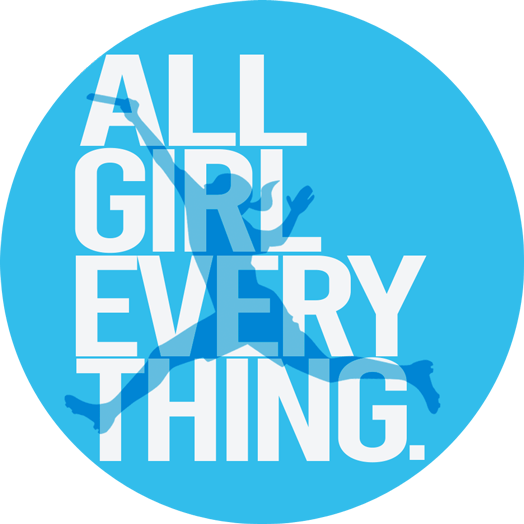Our brilliant AGE UP Girls Program participant, Summer Intern, and Asa Mercer Middle School Alum, Shylynn Rodrigues, wrote this super dope article about the experience of people of color in ultimate. Check it out:
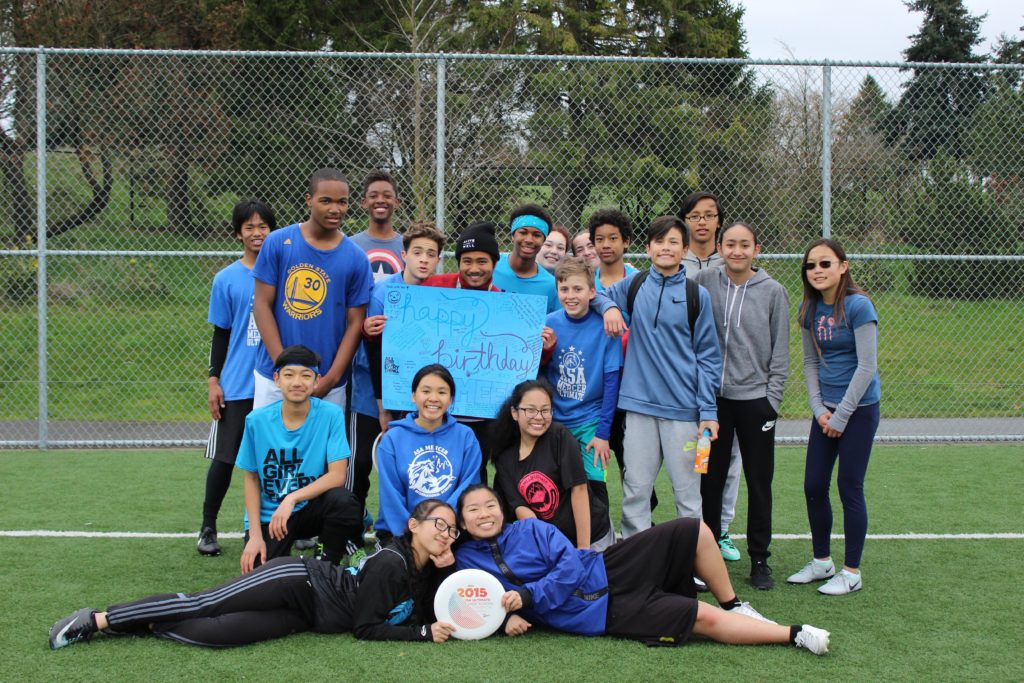 I grew up in Beacon Hill in Seattle. Beacon Hill is southeast of downtown. Originally a neighborhood for Boeing workers and then Asian immigrants, the neighborhood has, more recently, been one of Seattle’s most diverse communities. I attended middle school at Asa Mercer, where there were over 1,000 students enrolled and the majority of the student population being Asian or Black. When I started 6th grade at Asa Mercer Middle School, I would go out to the field during lunch and toss around a frisbee with my friends. I went to ultimate tryouts and man did I fall in love with the sport. It was as if everything came naturally to me. I could throw, run fast, catch, and quickly picked up the rules of the sport. After watching a drill for the first time I was able to flow in and out of rotations, and I built a nice groove with the rest of the team and really connected. That’s what I liked about the sport, but what I really loved about it was the community.
I grew up in Beacon Hill in Seattle. Beacon Hill is southeast of downtown. Originally a neighborhood for Boeing workers and then Asian immigrants, the neighborhood has, more recently, been one of Seattle’s most diverse communities. I attended middle school at Asa Mercer, where there were over 1,000 students enrolled and the majority of the student population being Asian or Black. When I started 6th grade at Asa Mercer Middle School, I would go out to the field during lunch and toss around a frisbee with my friends. I went to ultimate tryouts and man did I fall in love with the sport. It was as if everything came naturally to me. I could throw, run fast, catch, and quickly picked up the rules of the sport. After watching a drill for the first time I was able to flow in and out of rotations, and I built a nice groove with the rest of the team and really connected. That’s what I liked about the sport, but what I really loved about it was the community.
When I graduated from middle school, I decided to leave the South End and head to University Prep (UPrep), an elite private school in the North End. When I walked onto UPrep’s campus, I was a bit taken aback. I didn’t see a single teacher of color until my third day there, and there were barely any students who looked like me. I was one of the few Native Hawaiian and Filipino identifying students at my school. I was the only student from Mercer and one of the 16 students of color in my class of 86 people. In middle school, I didn’t realize or understand race because everyone looked like me in the South End, but now, in the North End, I couldn’t help but notice race — and privilege — all around me. My classmates were privileged, almost all white, and more “welcomed” by the institution. This lack of diversity and welcome, I would soon find out, extended to the ultimate field.
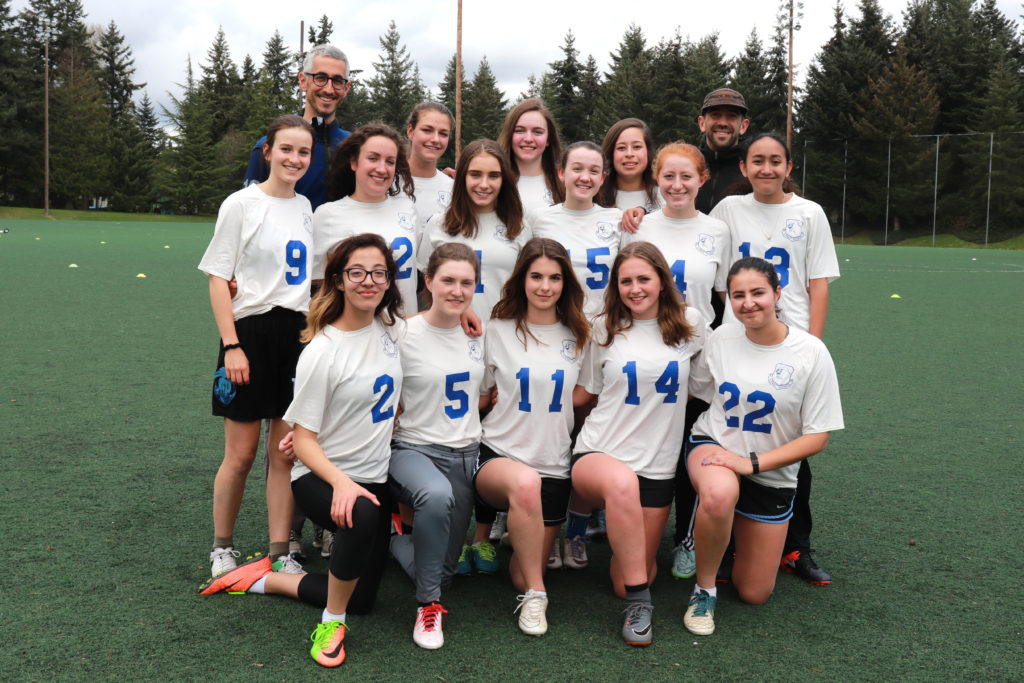 When I went to try out for the ultimate team the first thing I noticed was that I was one of nine Students of Color (out of 35) that tried out. Only four Students of Color made the varsity team (of 17 players). I couldn’t help but compare UPrep’s ultimate team to what I experienced playing at Mercer. In middle school we had coaches who worked with AGE UP who taught us how our race was a factor in how people see us. AGE UP is an ultimate outreach program for Players of Color. They taught players about leadership skills, social justice, oppression, classism, sexism, and racism. They provided support for each of their players. Honestly, I didn’t see that at UPrep. There were small discussions that we had here and there about race but those would only happen about once every two months. I can recall times when our coach at Mercer would talk about AGE UP. About how our race will be seen differently on the field. We talked about ways to deal with that. At UPrep, there was nothing like that. Yes, the school is mostly white but a lot of Students of Color play sports there and stay quiet about their experiences if it doesn’t match their white teammates.
When I went to try out for the ultimate team the first thing I noticed was that I was one of nine Students of Color (out of 35) that tried out. Only four Students of Color made the varsity team (of 17 players). I couldn’t help but compare UPrep’s ultimate team to what I experienced playing at Mercer. In middle school we had coaches who worked with AGE UP who taught us how our race was a factor in how people see us. AGE UP is an ultimate outreach program for Players of Color. They taught players about leadership skills, social justice, oppression, classism, sexism, and racism. They provided support for each of their players. Honestly, I didn’t see that at UPrep. There were small discussions that we had here and there about race but those would only happen about once every two months. I can recall times when our coach at Mercer would talk about AGE UP. About how our race will be seen differently on the field. We talked about ways to deal with that. At UPrep, there was nothing like that. Yes, the school is mostly white but a lot of Students of Color play sports there and stay quiet about their experiences if it doesn’t match their white teammates.
And I’m not the only one experiencing this kind of problem.
Experiences being one of the only Players of Color on the field:
Oftentimes when I or a fellow player of color steps onto the field, whether it is for a game or practice, it seems like we often need to put on a mask and hide certain parts of ourselves. Some players felt like they had to play a role, myself included. According to Miko (Meeks) Pugal, “I needed to act clean, so I don’t get the representation of the South end that if you’re aggressive, you’re violent or hella shady. I had to put my white voice on and feel smaller. It felt like when I played other people, they just looked at us and I already felt like I didn’t belong and that made me upset.” Whether you have to put on a mask or play a role, there are still certain times and situations where you will be treated differently, will be seen as less compared to your white teammates. Your mistakes will be extrapolated to the point that people start talking about the school you go to or where you live, saying things like, “You know your team really gets by on their athleticism” or “Tell your player to stop playing like a thug.”
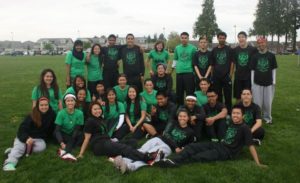
These things are said because there are certain microaggressions against a team of black and brown players. Where the diverse team is seen as more aggressive, because they are from a lower income neighborhood, or sometimes it’s because they are black and brown. When there are white teams doing the exact same things as these players, and yet the diverse team gets backlash. “Khalif and Jesse believe the reason the majority of players don’t really know the Black struggle or minority struggle is that, unless they have a Black person on their team or they go seek out opportunities to be better informed, they simply don’t experience it. This is why it’s so important to spread ultimate to new communities and increase the diversity within the sport” (Melton, Larry, “Your Perception Forces Our Reality” USAU Article, 2019). Without really knowing what your teammates or Players of Color are going through it’s hard to change and really include diversity within this sport.
Ultimate at University Prep:
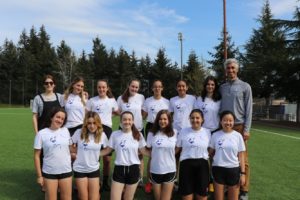 I was not the only one who experienced or witnessed the microaggressions or felt the burden of race at UPrep. Due to my experiences I started to speak to current UPrep and alumni players who also shared similar experiences. We discussed things that seemed unfair and our experiences with the head coach. “My coach would talk more critically with me, whereas with the other girls he would just praise them and give them certain pointers. But with me and a couple other girls that are people of color he would be like ‘you gotta be like this, you have to throw like this, I expected this from you’” (Nubia Robles, UPrep class of 2020). There were imbalances of playing time for Players of Color compared to white players, and it wasn’t entirely based on skill level. Another UPrep player stated that, “Definitely. I think it’s less pronounced then on the girls’ team, but our entire starting line last year was white”(UPrep player class of 2020). Players of Color often have to overcome the ignorance and (not so) subtle forms of discrimination in the ultimate community, which make it harder for them to get the time they deserve on the field. A current UPrep player remarked that, “Students of Color seem to have to ‘earn’ their playing time during practices throughout the week, and [one of the coaches] seems to always be ready to call out each of their mistakes” (UPrep player class of 2021). These problems start to become so frustrating because it seemed like “each time a student of color missed a practice, the coach would demand explanations, but when one of the white girls continuously misses practice, he never mentions anything” and most of the time they still get more playing time (UPrep player class of 2021). A former teammate of mine tried to bring this to the attention of a coach at the beginning of the season but they didn’t see much change.
I was not the only one who experienced or witnessed the microaggressions or felt the burden of race at UPrep. Due to my experiences I started to speak to current UPrep and alumni players who also shared similar experiences. We discussed things that seemed unfair and our experiences with the head coach. “My coach would talk more critically with me, whereas with the other girls he would just praise them and give them certain pointers. But with me and a couple other girls that are people of color he would be like ‘you gotta be like this, you have to throw like this, I expected this from you’” (Nubia Robles, UPrep class of 2020). There were imbalances of playing time for Players of Color compared to white players, and it wasn’t entirely based on skill level. Another UPrep player stated that, “Definitely. I think it’s less pronounced then on the girls’ team, but our entire starting line last year was white”(UPrep player class of 2020). Players of Color often have to overcome the ignorance and (not so) subtle forms of discrimination in the ultimate community, which make it harder for them to get the time they deserve on the field. A current UPrep player remarked that, “Students of Color seem to have to ‘earn’ their playing time during practices throughout the week, and [one of the coaches] seems to always be ready to call out each of their mistakes” (UPrep player class of 2021). These problems start to become so frustrating because it seemed like “each time a student of color missed a practice, the coach would demand explanations, but when one of the white girls continuously misses practice, he never mentions anything” and most of the time they still get more playing time (UPrep player class of 2021). A former teammate of mine tried to bring this to the attention of a coach at the beginning of the season but they didn’t see much change.
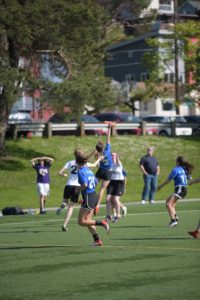 For Nubia and many other UPrep Players of Color, myself included we faced the issue of our coach, who is a white male unintentionally treating us differently. “I think our coaches are good people who make choices based off of unintended biases, but when the patterns run so deep, it’s hard to give them the benefit of the doubt” (UPrep player class of 2020). Regardless of whether it’s the beginning of the season or when the season picks up and gets closer to playoffs and states, the upper (mostly white) players receive the most playing time and attention. I felt like I had to prove to the coaches that I have the same skills the white players have. My 9th grade year, Nubia and I experienced having to sit on the sidelines because the white players would automatically get put in even if they were brand new and inexperienced players. We weren’t played in our playoff game against Seattle Academy because the coaches didn’t think we had the potential to do good on the field. It’s hard when there’s that imbalance between players.
For Nubia and many other UPrep Players of Color, myself included we faced the issue of our coach, who is a white male unintentionally treating us differently. “I think our coaches are good people who make choices based off of unintended biases, but when the patterns run so deep, it’s hard to give them the benefit of the doubt” (UPrep player class of 2020). Regardless of whether it’s the beginning of the season or when the season picks up and gets closer to playoffs and states, the upper (mostly white) players receive the most playing time and attention. I felt like I had to prove to the coaches that I have the same skills the white players have. My 9th grade year, Nubia and I experienced having to sit on the sidelines because the white players would automatically get put in even if they were brand new and inexperienced players. We weren’t played in our playoff game against Seattle Academy because the coaches didn’t think we had the potential to do good on the field. It’s hard when there’s that imbalance between players.
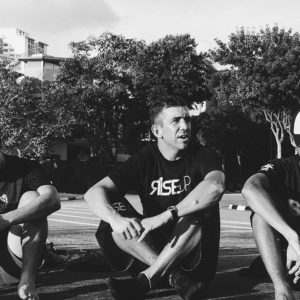 Recently Mario O’Brien (founder of RISE UP ultimate, an online learning library and current club player for Seattle BFG) has coached at UPrep as the Varsity Boy’s and Girl’s co-head coach, and D1 middle school Girl’s head coach. When I asked Mario about this imbalance of playing time, he agreed that he’s seen a bit of this. He said that there were a couple factors, one being seniority. Although Mario hasn’t actively fought for the equal playing time for his players, he realizes what his impact was, “It doesn’t matter what the reasons were, what matters is that it was there, and it was felt. That’s my big takeaway. It doesn’t matter that there were reasons why certain people played more over others, it doesn’t matter that my intention was one thing, what matters is what the impact was. That’s one thing that I’m working on.” As Mario looks back on his time there, he sees room for improvement. “I have not put any intentionality until right now. I would say I never did as much at UPrep as I could have, and I think it just wasn’t on my radar yet.” Looking back at it, something he would do to improve is have a season long discussion and plan around equity and take time to talk to the Players of Color and ask them about their experiences.
Recently Mario O’Brien (founder of RISE UP ultimate, an online learning library and current club player for Seattle BFG) has coached at UPrep as the Varsity Boy’s and Girl’s co-head coach, and D1 middle school Girl’s head coach. When I asked Mario about this imbalance of playing time, he agreed that he’s seen a bit of this. He said that there were a couple factors, one being seniority. Although Mario hasn’t actively fought for the equal playing time for his players, he realizes what his impact was, “It doesn’t matter what the reasons were, what matters is that it was there, and it was felt. That’s my big takeaway. It doesn’t matter that there were reasons why certain people played more over others, it doesn’t matter that my intention was one thing, what matters is what the impact was. That’s one thing that I’m working on.” As Mario looks back on his time there, he sees room for improvement. “I have not put any intentionality until right now. I would say I never did as much at UPrep as I could have, and I think it just wasn’t on my radar yet.” Looking back at it, something he would do to improve is have a season long discussion and plan around equity and take time to talk to the Players of Color and ask them about their experiences.
Youth club and college experiences:
Playing on a high school team has its ups and downs. You can either be really close to your whole team or just with a few teammates. “It’s nice to see people like you. We get together during practice and talk about stuff other girls don’t get. It’s nice because you get your own community, but it’s a little sad because you don’t get to mesh as well with the rest of your team. There’s different cliques, which can affect the team’s overall play because there isn’t chemistry on the field” (Nubia Robles). There are often times when you don’t share the same connections or inside jokes with each other because your teammates may not come from the same background. “It was hard for me; I would feel super isolated… there was a level where they don’t understand the stories I have. The things that lead me to use ultimate, why it’s super serious for me to play and why I choose to play.”
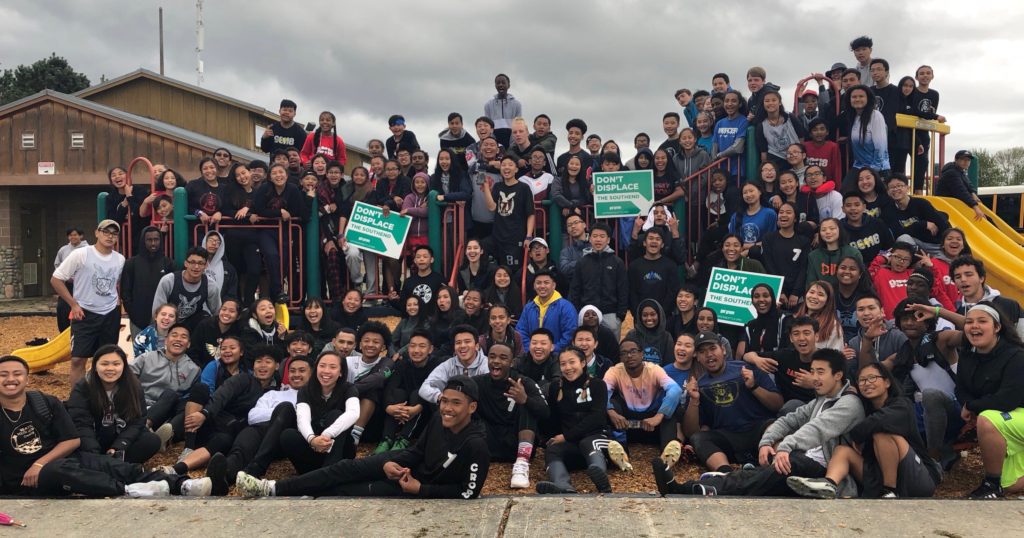 For Meeks ultimate wasn’t just about playing for fun. For a lot of people of color, me included it was our outlet, our safe place. “I play because there’s things in this world that I didn’t feel safe in and ultimate was the first place that I got to choose how I want to dictate that space.” Due to these certain things Meeks was facing it was hard for him to balance competitiveness and use this as a place that he was comfortable being in. “Me being brown or my homies being followed by cops isn’t going to stop because I’m playing ultimate. I wear [my Black Lives Matter and Don’t Displace the Soufend shirts] to remind people that nowhere is safe for us, so we have to actively choose to make it safe” (Miko Pugal), and oftentimes that’s the reality for Players of Color.
For Meeks ultimate wasn’t just about playing for fun. For a lot of people of color, me included it was our outlet, our safe place. “I play because there’s things in this world that I didn’t feel safe in and ultimate was the first place that I got to choose how I want to dictate that space.” Due to these certain things Meeks was facing it was hard for him to balance competitiveness and use this as a place that he was comfortable being in. “Me being brown or my homies being followed by cops isn’t going to stop because I’m playing ultimate. I wear [my Black Lives Matter and Don’t Displace the Soufend shirts] to remind people that nowhere is safe for us, so we have to actively choose to make it safe” (Miko Pugal), and oftentimes that’s the reality for Players of Color.
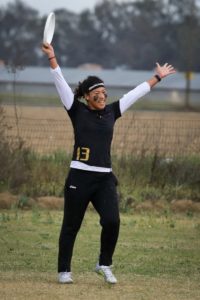 There can be the feeling that you either belong or don’t on a team, and I’m sure close to every player of color has felt that at least once in their career. When you make a team solely for the reason to add diversity, you aren’t going to feel like you belong, you won’t feel like you earned that spot. It was just given to you and that hurts the player’s self-esteem. For Nariah Sims growing up Cuban and Filipino, and attending Aki Kurose middle school then Lakeside High School, she wanted to play on the most competitive teams out there but they didn’t always want her. “Whenever I made teams when I was younger like YCC or worlds they would say I made it because they needed more diversity and not because of my skill. I was told that as a joke from my friends and seriously from others that I shouldn’t be on those teams.” When you get told that at a young age, it really sticks with you, but it also makes you work harder and prove to everyone else that you do deserve to be here, and it’s not purely just to add diversity to the team.
There can be the feeling that you either belong or don’t on a team, and I’m sure close to every player of color has felt that at least once in their career. When you make a team solely for the reason to add diversity, you aren’t going to feel like you belong, you won’t feel like you earned that spot. It was just given to you and that hurts the player’s self-esteem. For Nariah Sims growing up Cuban and Filipino, and attending Aki Kurose middle school then Lakeside High School, she wanted to play on the most competitive teams out there but they didn’t always want her. “Whenever I made teams when I was younger like YCC or worlds they would say I made it because they needed more diversity and not because of my skill. I was told that as a joke from my friends and seriously from others that I shouldn’t be on those teams.” When you get told that at a young age, it really sticks with you, but it also makes you work harder and prove to everyone else that you do deserve to be here, and it’s not purely just to add diversity to the team.
Whether or not they realize it or make the decision consciously, many coaches make game decisions based on race. White coaches often make the assumption for whatever reason that Players of Color would only want to guard other Players of Color. When in reality you really just want to line up, play, and guard the strongest opponent whether that’s a person of color or not. Jesse told me about a time he played at YCC: “I remember playing against Pittsburgh and they put another black person on me and after the point he’s yelling at his teammates ‘he’s the best player on the team why would you give me this matchup’ and it seemed 100% racially involved like ‘oh no you’re both black you should guard each other’ verses ‘well we should probably put our better defender on him.’” 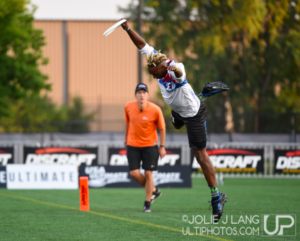 He remembered this vividly. The person that originally matched up on him walked off the field yelling at the leadership of his team, and the leadership was shocked because they made the assumption that that player would feel more comfortable matched up against Jesse instead of strategically thinking that a better defender should match up for better outcomes.
He remembered this vividly. The person that originally matched up on him walked off the field yelling at the leadership of his team, and the leadership was shocked because they made the assumption that that player would feel more comfortable matched up against Jesse instead of strategically thinking that a better defender should match up for better outcomes.
There are many assumptions made about people of color.
- Oh, you’re black you must be able to jump really high or run really fast…
- You’re Asian you’re probably fast and sneaky…
- Black people are really athletic…
- Asians are robots…
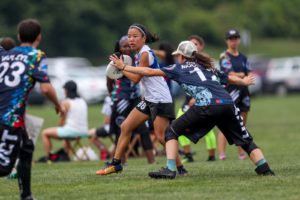 Lili has experienced some of these assumptions in college and even now at the club level: “I’ve seen those kind of things and when people see the assumption ‘oh well you look like you should do this thing’ and I’ve even been told by coaches when I’ve been like ‘are you sure you want me to do this, I’m not really sure what I’m doing’ they’ve been like ‘oh well it’s a great thing you get to join the club of small Asian handlers.’” When these assumptions are made it makes you feel smaller, like you aren’t fully appreciated. Jesse said it well, “It feels like we’re put in a box and white people aren’t put in boxes, they can mess up at something and be put somewhere else, be asked to do something else, and it’s like ‘well if you’re a person of color and you aren’t athletic and you can’t play defensive and get a dump off you’re not valuable.’” When players are put into these positions they feel invaluable and feel like they aren’t needed on the team because they aren’t able to show their full potential when assumptions get in the way.
Lili has experienced some of these assumptions in college and even now at the club level: “I’ve seen those kind of things and when people see the assumption ‘oh well you look like you should do this thing’ and I’ve even been told by coaches when I’ve been like ‘are you sure you want me to do this, I’m not really sure what I’m doing’ they’ve been like ‘oh well it’s a great thing you get to join the club of small Asian handlers.’” When these assumptions are made it makes you feel smaller, like you aren’t fully appreciated. Jesse said it well, “It feels like we’re put in a box and white people aren’t put in boxes, they can mess up at something and be put somewhere else, be asked to do something else, and it’s like ‘well if you’re a person of color and you aren’t athletic and you can’t play defensive and get a dump off you’re not valuable.’” When players are put into these positions they feel invaluable and feel like they aren’t needed on the team because they aren’t able to show their full potential when assumptions get in the way.
Sometimes it’s hard to process and deal with these types of things when they happen on the field, especially if there’s no one there to help and support you. For Nariah, “there was a moment at college nationals where [she] was the only player of color on the field and [she] was given a blue card when someone else who was white went into [her] back and blindsided [her], but [she was given a card for it because [she] ws being “aggressive”” (Nariah Sims). When she got the blue card it was because people make those assumptions– stereotypes that brown people are aggressive, and she was blamed for something that happened to her. Your family may tell you that, that will happen on the field, but it doesn’t prepare you for the moment it actually happens, no one teaches you how to have those conversations.
Implicit biases:
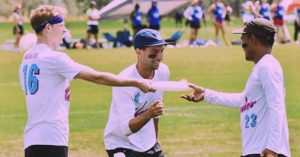 In the last couple years of playing professional ultimate, Ryan Segal, current Cascades player, has noticed that there’s implicit bias between players on the field, and when you add referees it’s taken to another level. A lot of the things he saw, was his younger high school or college Cascades teammates (who are Players of Color) consistently get physical contact on offense, disrupted by fouls, are being over and over again ignored. Contact would happen with white players on his team that would look less or similar to those on his younger teammates of color, and they would get instantly called, but none of his younger teammates got the same treatment. “There’s this implicit bias and ignorance that some teams have because they come from a community that is so homogenous that it’s like a big echo like vacuum of noise that at times when they get out into the world as a whole, they’re just awful people” (Ryan Segal). Ryan noticed how it was so consistent, obvious, and incredibly frustrating for them, when it was blatantly clear they weren’t getting a fair shake.
In the last couple years of playing professional ultimate, Ryan Segal, current Cascades player, has noticed that there’s implicit bias between players on the field, and when you add referees it’s taken to another level. A lot of the things he saw, was his younger high school or college Cascades teammates (who are Players of Color) consistently get physical contact on offense, disrupted by fouls, are being over and over again ignored. Contact would happen with white players on his team that would look less or similar to those on his younger teammates of color, and they would get instantly called, but none of his younger teammates got the same treatment. “There’s this implicit bias and ignorance that some teams have because they come from a community that is so homogenous that it’s like a big echo like vacuum of noise that at times when they get out into the world as a whole, they’re just awful people” (Ryan Segal). Ryan noticed how it was so consistent, obvious, and incredibly frustrating for them, when it was blatantly clear they weren’t getting a fair shake.
There are times when implicit bias can be seen in leadership. The 2019 Seattle Cascades season had room for improvement. “I don’t know what it is, but teams are afraid of change, and we really need to embrace it. Getting a new perspective in leadership will only broaden the scope of your team and allow growth,” Bolton said. Brad Houser and Mark Burton, two white players, were picked as primary captains. Houser mentioned that there were a couple factors that aided that decision: people didn’t want to captain due to prior commitments and team managers didn’t see a player as a “good fit” as captain. Burton and Houser did try to even out leadership by setting up five different committees: O-line, D-line, Workout, Spirit, and Social Justice. Burton and Houser made sure that the committees were represented by women, players of color, and younger players including Khalif El-Salaam, Marc Munoz, Dennis Casio, Kodi Smart, and Steph Lim. With this in place, most of the team was able to have a say in decision making, combatting some of that implicit bias, although there were still some places where the team could have done better. Bolton and Houser both agreed that the “talented roster was not fully utilized to [its] potential.”
AGE UP:
AGE UP represents a way forward for making ultimate a more inclusive and equitable community. “AGE UP is the intersection between coaching, understanding systems of oppressions, and doing work in the community through projects. All these different ways we can build around ultimate frisbee.” AGE UP has values around the space we have to think about how coaching to heal works, and coaches have the chance to build that philosophy out with them to make their coaching experience for youth players better. For the first-year program it’s a 10-week course for those who identify as male and those who identify as female, where they’re able to have a crash course of systems of oppression. They discuss racism, classism, sexism, and limitations sexism has on men. 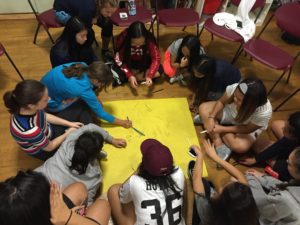 AGE UP also reaches out to different community members in the South end that does work around social justice trainings, anti-racism work, anti-displacement work, environmental justice, and they bring in facilitators to meet with the young people and facilitate workshops so players know that “hey there’s people in our community that’s fighting for you and fighting with you.” AGE UP is the perfect organization for Players of Color to feel connected to one another. AGE UP is also in the works of expanding their program so that schools like UPrep have access to their opportunities for Players of Color.
AGE UP also reaches out to different community members in the South end that does work around social justice trainings, anti-racism work, anti-displacement work, environmental justice, and they bring in facilitators to meet with the young people and facilitate workshops so players know that “hey there’s people in our community that’s fighting for you and fighting with you.” AGE UP is the perfect organization for Players of Color to feel connected to one another. AGE UP is also in the works of expanding their program so that schools like UPrep have access to their opportunities for Players of Color.
Conclusion:
“People will like you and you’ll be more comfortable with that. And people who don’t want to be around you won’t be around you and that’s just their loss.”
-Jesse Bolton on just being yourself
Players of Color should not have to change themselves, “act” more white, or put on a mask when they step onto the ultimate field to fit in or to make it easier for others to like them. Any ultimate players should be able to be themselves on and off the field and not have to worry about facing double standards, implicit biases, inequalities, and exclusion. Unfortunately that hasn’t been the case. The double standards, biases, and inequalities held over the heads of Players of Color have a negative impact on them and this should not be the case. Moving forward as a community we should create better environments for Players of Color.
Programs like AGE UP could inspire more discussions around race and equality both in ultimate and in schools. Some people might not see it but independent schools are much like the ultimate field. Schools also have double standards for Students of Color. Teachers believe Students of Color should behave more like the white students. Microaggressions that go by unnoticed by white students and teachers are vivid and can be traumatic to Students of Color. Unintended exclusion by teachers and coaches in the classroom and on teams go over the heads of some but add on layers of hurt for Students of Color. Moving forward this is something that needs to be on people’s radars. We can’t and shouldn’t ignore or hope these subtle forms of racism will go away. We need to feel it’s presence, acknowledge it, and we need to do something about it.
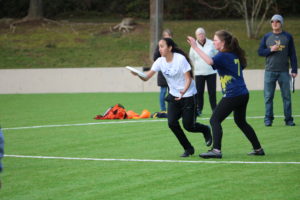 When I first started playing it was because of that community I experienced and was a part of at Asa Mercer. I thought I would have something like that at UPrep but I was wrong. I hoped for that sort of experience, but it’s not the same community I was a part of before. Yes, I was a part of a community within my team with the other players of color and a few of the white players but we weren’t as close as I hoped. I had similar experiences on my clubs teams too. It didn’t mean that there isn’t a community where everyone is close. It’s just something we all have to actively work towards. I do believe that this can change, it’s just something that all players and coaches have to collectively work towards.
When I first started playing it was because of that community I experienced and was a part of at Asa Mercer. I thought I would have something like that at UPrep but I was wrong. I hoped for that sort of experience, but it’s not the same community I was a part of before. Yes, I was a part of a community within my team with the other players of color and a few of the white players but we weren’t as close as I hoped. I had similar experiences on my clubs teams too. It didn’t mean that there isn’t a community where everyone is close. It’s just something we all have to actively work towards. I do believe that this can change, it’s just something that all players and coaches have to collectively work towards.


